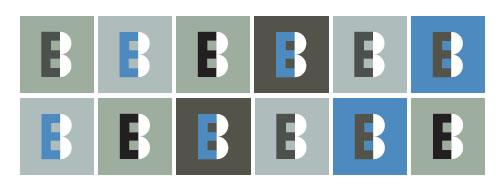Children’s input is vital to creating an online library that meets children’s information needs
DOI:
https://doi.org/10.18438/B83012Abstract
A review ofDruin, Allison. “What Children Can Teach Us: Developing Digital Libraries for Children with Children.” The Library Quarterly 75.1 (January 2005): 20-41.
Objective – Through use of an interdisciplinary research team that included children, the study aimed to demonstrate that including children in the design of a digital library for children would result in some new approaches that would improve the site’s usability for the target user group.
Design – Case study.
Setting – The research was conducted at University of Maryland over a four-year period and involved an interdisciplinary research team of adult researchers from information studies, computer science, education, art, and psychology as well as seven children aged 7-11.
Subjects – Seven children participated in the design team over two years; 153 children were observed and interviewed in the design phase; and the resulting new approaches were validated post-launch by analysis of International Children’s Digital Library (ICDL) (http://www.icdlbooks.org) users and usage patterns from November 2002-November 2003 (over 90,000 unique users and 19,000 optional questionnaire respondents).
Method – The study included seven children in the design team for a digital library of international children’s books, which resulted in new approaches to collection development, cataloguing, and the search interface. In the design phase, research methods involving the seven children included brainstorming techniques, “cooperative inquiry”, low-tech prototyping; and lab use studies. The team also undertook observation and interviews of 153 children engaged in searching and selecting books from public library catalogues. In validating the new approaches that resulted from the design research, the team employed web log analysis, a voluntary online survey, and working with children in local schools to understand their use of ICDL.
Main results – The inclusion of children’s viewpoints in the design stage of the ICDL had an impact in three areas: collection development, metadata, and interface design.
For collection development, the research showed that kids were interested in books about children from other cultures and other times in history; in animals, both real and make-believe; in books that are sensitive to other cultures; and in books that are in good condition. For metadata, the research showed that children do not distinguish ‘fiction’ and ‘non-fiction’; look for ‘scary stuff’ or ‘gross stuff’; are often seeking books that make them feel a certain way; care about the look of book covers and may recall books by jacket colours; and use free vocabulary like ‘princesses’ and ‘jokes’. For interface design, the children’s involvement led to more search options (utilizing the new categories of metadata that were created), and customization options such as ability to choose different forms and colour palettes for book readers (e.g. the comic book reader, the spiral book reader).
Web log and survey data, as well as lab tests, showed that the innovations resulting from the children’s design input were used. Of the over 90,000 unique users who visited the site in its first year, “genre” and “color” were statistically the fourth and fifth most popular search categories. In lab tests, girls used “color” twice as often as boys, and older boys preferred “genre” while younger children did not pay attention to that category.
Conclusions – A first conclusion is that children’s input is vital to creating an online library that meets children’s information needs, tendencies and preferences. Also, seven design principles emerged:
1. Children’s input is invaluable and they should be involved in the design of their libraries.
2. Digital collections for children should consider works both contemporary and historical, and in different languages and representative of different cultures.
3. A variety of search interfaces are needed and it is particularly important to express categories with visual icons.
4. Additional metadata can be needed to reflect children’s views of relevant search criteria.
5. Interfaces should be customizable, such as providing various formats of reader that could themselves be customized in colour.
6. Tools should be suitable for use from the home and for collaborative use, such as use by a parent with a child.
7. Innovation requiring high bandwidth must be balanced with a low bandwidth version to assure broadest possible use.
Lastly, the researchers concluded that more research is merited to assess the broader impact of digital libraries on children as searchers and readers.
Downloads
Downloads
Published
How to Cite
Issue
Section
License
The Creative Commons-Attribution-Noncommercial-Share Alike License 4.0 International applies to all works published by Evidence Based Library and Information Practice. Authors will retain copyright of the work.








